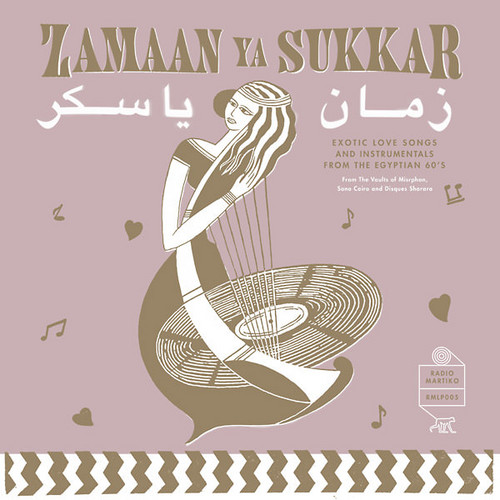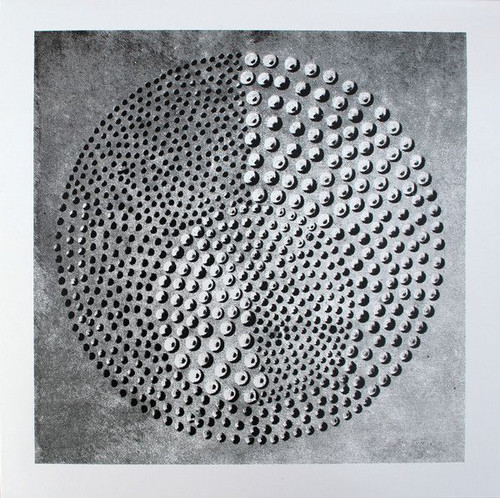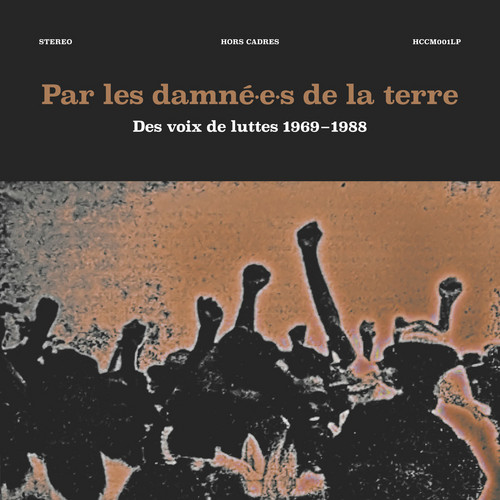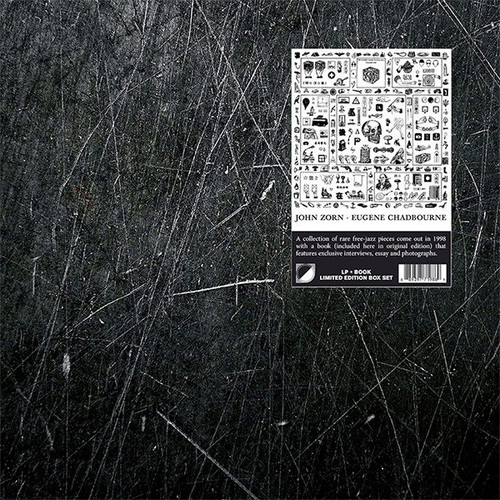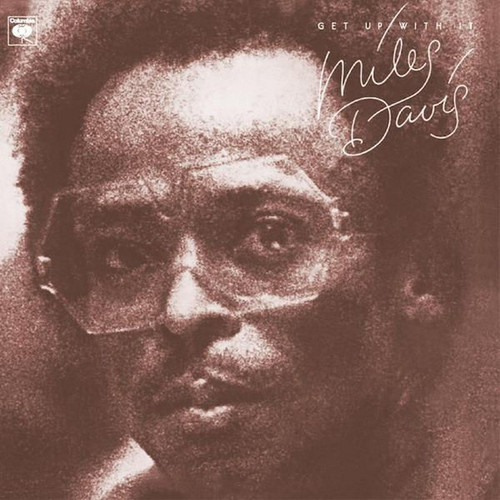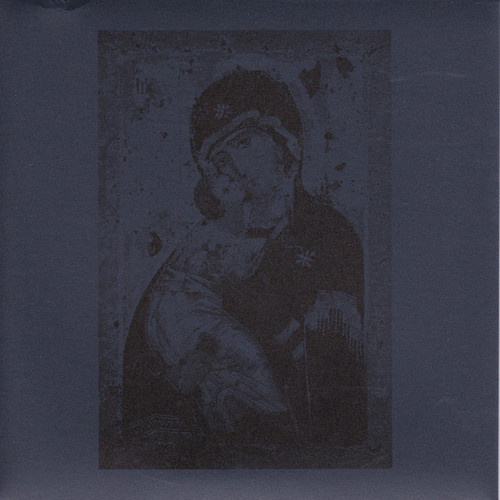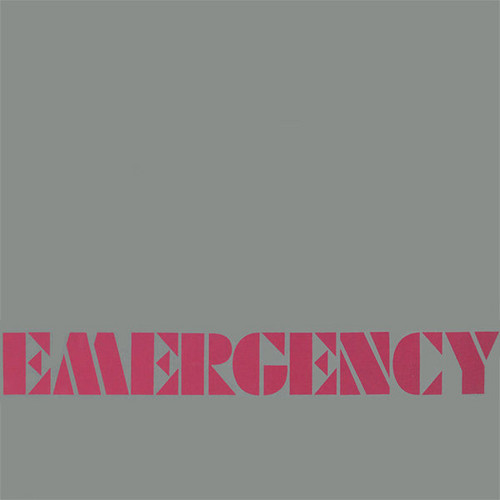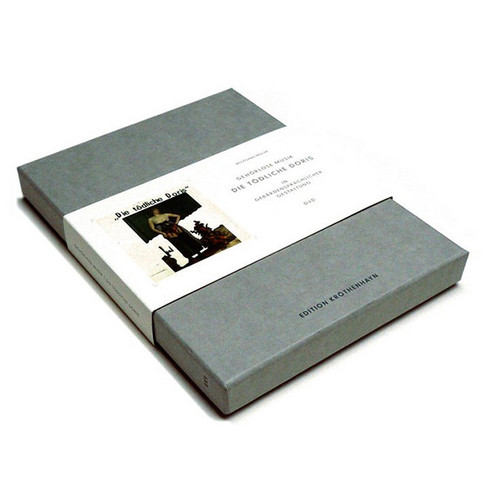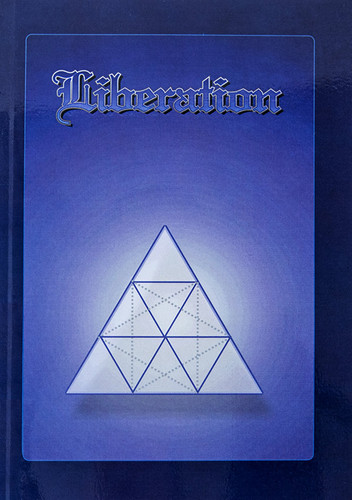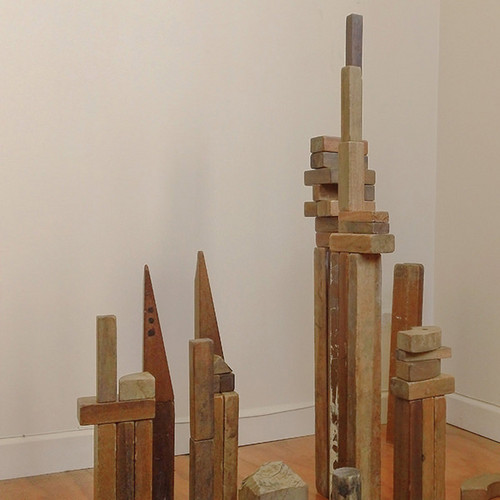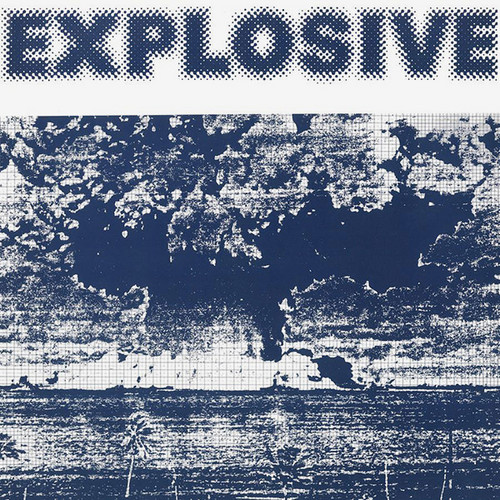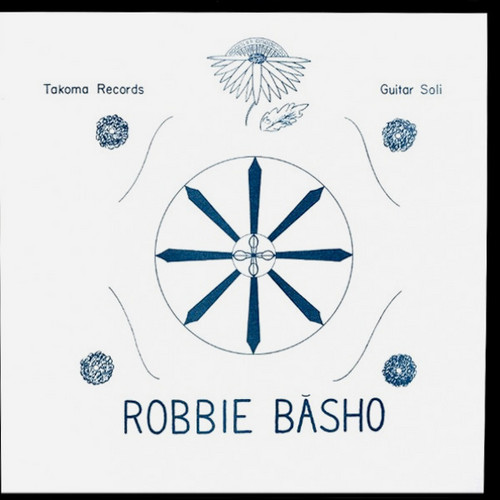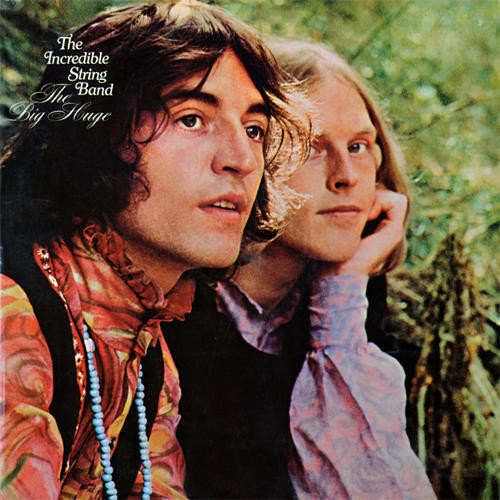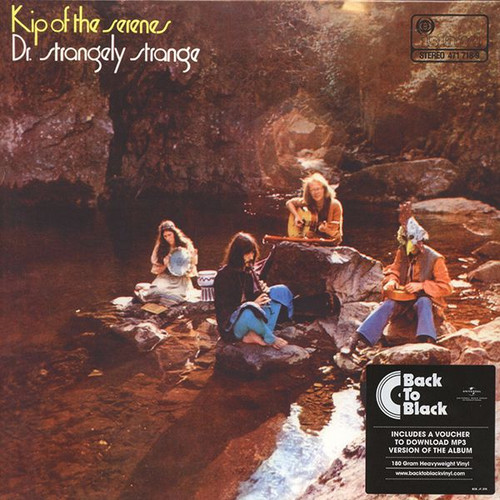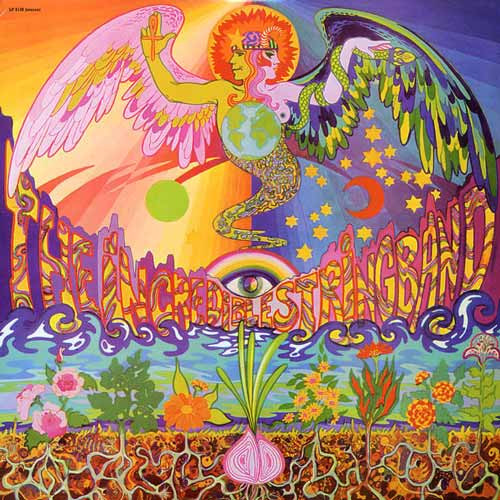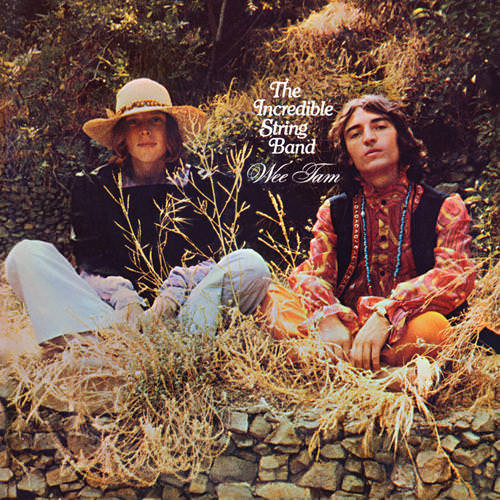Back in stock
Zamaan Ya Sukkar: Exotic Love Songs and Instrumentals from
Zamaan Ya Sukkar is a rich musical portrait from the time when Cairo was the vibrant cultural heart of the Middle East and the grandeur of the leading orchestras was incomparable. Unearthed Latin and jazz-tinged tracks will let your mind drift off to the glamorous nightlife of '60s Cairo. Meet some forgotten souls of the Egyptian music scene and cinema world. Sensual voices and Bollywood-like orchestra sounds inflame the senses of the body with an intangible exotic twist! All music is remastered…
Cyclide
Edition of 200. Maulex, the moniker of René Middelhede, has been floating around for the better part of the last decade, issuing a catalog of minimal, electronic wonders. Cyclide, his latest, co-released with the Phloq label, and limited to 200 copies with lovely silk screened covers, plunges further, and takes us deeper, into the composer's evolving practice in sound. Created entirely on a modular synth, the LP unfolds as a shimmering realm of ambience, texture, and complex structures - evolvin…
Par Les Damné.e.s De La Terre 1969 - 1988
2-LP vinyl edition comes with a comprehensive 36-page booklet. Stunning double LP set collecting rare protest songs from around the world - mostly from former French colonies - with a distinctive experimental/free jazz and avant-garde touch all over. All are sung or delivered in French and the tracklist also features short extracts from anti-colonialist political speeches. Featuring Art Ensemble of Chicago, Colette Magny, Salah Sadaoui, Francis Bebey and many more
1977-1981
Restocked, reduced price. A collection of rare free-jazz pieces performed by John Zorn and selected by the American guitarist and music critic Eugene Chadbourne. Come out in 1998 to accompany the book release “Sonora: John Zorn” (Materiali Sonori), the album is presented here for the first time in an exclusive release in limited edition on vinyl.The special issue includes the original book that features exclusive interviews, essays and photos about the artist’s entire oeuvre up to 1988.
Get Up With It
Miles Davis' 1974 album Get Up With It is a collection of tracks recorded between 1970 and 1974. Released as a double LP, it was Davis' last studio album before five years of retirement from music. He Loved Him Madly was recorded by Davis as his tribute to then-recently deceased Duke Ellington, who used to tell his audiences I love you madly. English musician Brian Eno cited it as a lasting influence on his own work.This album is an essential. An overlooked classic of Psychedelic Soul, represent…
Maria (1995) Medium Of Lights (1996) Assimilation (1999)
A repackaged and remastered 3CD set that compiles three of Diesel Guitar's key 90's works: "Maria" (1995), "Medium of Lights" (1996), and "Assimilation" (1999). "Medium of Lights" and "Assimilation" have always been particularly hard to track down, both having been released in very limited editions. All tracks were remastered by Kiyoharu Kuwayama (Lethe) in 2016. The individual sleeves provide printed reproductions of the original artwork and package design. Limited edition of 200."Maria" (1995)…
Emergency 1971
Also for the first time legally reissued is Emergency`s second album from 1972 'Entrance', also on CBS. It has two long tracks (More than ten minutes each) on the b-side and shows the band at it's peak. Perfect musicians play perfect music. Both albums are a must-have! Remastered from mastertape. Both albums are remastered from the mastertapes out of the Sony/CBS archives. The sound is brilliant. Little story included. Limited edition.
Gehorlose Musik
During the years 1980-87, German trio Die Tödliche Doris was absolutely legendary in the Berlin underground music and art scene. Embodying the pure, obscure spirit of "neue deutsche welle," their releases and live shows revealed a raw post-punk sensibility with performance art. Die Todliche Doris are still widely considered one of the most radical, intelligent and influential German avantgarde bands of the last two decades. Now this DVD brings the music of the legendary, long unavailable LP Gehö…
Earth Horns With Electronic Drone
Triple LP version of the entire 162-minute performance -- the vinyl
version therefore contains approx 85 additional minutes of music. Yoshi Wada and EM Records presents the first-ever, world-premiere release of Earth Horns With Electronic Drone,
recorded live in 1974. Combining four of Wada's self-made "pipehorns"
(made from plumbing materials, over three meters in length), with an
electronic drone tuned to the electrical current of the performance
space, this is a lost masterpiece of earl…
Ongakushitsu
Double LP version. Aki Tsuyuko may be best known on this side of the planet as the voice for Nobukazu Takemura, but she has been making her own music quietly and unassumingly for the last few years. Tsuyuko's own music is subdued, and more introspective that what is expected from the current generation of Japanese electronic music.Instead of the sample-crazed, cartoon-pitched high speed cacophony of say, someone like Space Ponch, the sound of Ongakushitsu is rooted in more organic sounds. Fender…
Liberation
FatherYod personal book. He wrote it in 1970 in 10 days and has been re-issued with a current update about The Source Family. The Source Family was a spiritual experiment which some call a
cult, from the 1970's. They ran a popular health food restaurant on
Sunset Blvd. in Hollywood and were a part of the West L.A. spiritual
awakening of the time. This book
contains an entire transcription of the original "bible" of the Source
Family written by its leader, Father Yod, entitled "Liberation," …
Polygome
In process of restock, last copies around. Edition of 300. Bridging the worlds of Modern Classical composition, musique concrète, electronic and electroacoustic music, organic jazz and minimalism while fitting comfortably in none, for more than a decade Piotr Kurek has remained a slow and elusive fixture in our sonic landscape, creating an entirely singular, almost lawless world of his own. After a series of records made in collaboration with others, and solo efforts under different monikers, th…
Rare Ravers
LP version. "Disguised as the meandering outpourings of vacant thought and activity dialed simultaneously from zero and ten. Formed in the cauldron of a fevered mistake resolute. Surrounded by ignorance, dis-interest, and the attention of the carefully self-selected. Recorded and burned through a thousand galaxies of dust and doubt and endless infinite wonder, transforming both time and space. Forever exiled to the very bottom of the world to reflect on the struggling desperate pile above. Recog…
Explosion
Fully remastered and licensed reissue, limited to just 350 copies on black wax. This killer Italian library album by Luciano 'Arawak' Simoncini was only ever released on the elusive Orrery Records label, and is now very hard to find. Still very much under the radar, Explosive reveals itself as a swift tangled web of beats for the discerning DJ. Tracks includes the driving cosmic funk Hardware with sharp hip-hop breaks and spaced-out abstract synth keys. Kangoroo Court is an even better alternati…
The Seal Of The Blue Lotus
180-gram vinyl, Tip-on cover. Originally released on John Fahey's Takoma Records in 1965, The Seal Of The Blue Lotus is the debut album from American guitar soli legend Robbie Basho. In college Basho immersed himself in the study of Asian art and culture, even changing his last name to that of the Japanese poet Matsuo Basho, and his music shows a much greater Eastern influence than contemporaries like John Fahey and Peter Lang. Basho was particularly entranced by the raga form which is apparent …
The Big Huge
Recorded in 1968, as the Incredible String Band popularity was peaking, the band by this point had more or less stabilized to quartet form with Williamson, Heron and Licorice being joined by Heron’s then-girlfriend, Rose Simpson, on violin and percussion. They were touring a lot at this point throughout Europe and the U.S., which I assume is how they fell in with the Scientologists, but that particular tragedy doesn’t have any noticeable effect on this album (!)Along with having very developed a…
Kip Of The Serenes
Dr. Strangely Strange were an experimental Irish folk group, formed in Dublin in 1967 by Tim Booth and Ivan Pawle. the Strangelys were friends and contemporaries of the Incredible String Band, whose producer Joe Boyd signed them to his Witchseason management and production company in 1969. This first album originally came out in mid 1969 on Island Records. Over the years, Kip has acquired a considerable cult status; in 2007, Record Collector Magazine proclaimed it one of the UK's hundred most co…
The Hangman\'s Beautiful Daughter
The 1968 release of The Hangman’s Beautiful Daughter, the third Incredible String Band album, was met with wide acclaim, both critically and commercially, reaching # in the UK. Sitar, oud, panpipe, jaw harp, water harp, penny whistle, chananai, harpsichord and gimbri merged with traditional folk instruments in a multi-tracked musical extravaganza. This audacious aural experience proved to be heavily influential on the band’s contemporaries. The surreal imagery of the song lyrics and the group’s …
The 5000 Spirits Or The Layers Of The Onion
The 5000 Spirits or the Layers of the Onion was the second LP by The Incredible String Band, released in July 1967. Since recording their debut album the previous year, the original trio had been reduced to two, Mike Heron and Robin Williamson. They recorded The 5000 Spirits... in London in early 1967. The album also featured Pentangle's Danny Thompson on double bass, Williamson's girlfriend Licorice McKechnie on vocals and percussion, master sitar player Nazir Jairazbhoy (credited as "Soma"), a…
Wee Tam
Wee Tam and The Big Huge were originally released in 1968 as both a double LP in the UK, and individually as two separate albums in the US. They mark a creative high point for the Incredible String Band that is only matched by their other 1968 masterpiece, The Hangman’s Beautiful Daughter. Produced, as always, by the legendary Joe Boyd, these albums feature some of the band’s best, and most accessible song writing. While Hangman’s and The 5000 Spirits… may have been considered more revolutionary…
